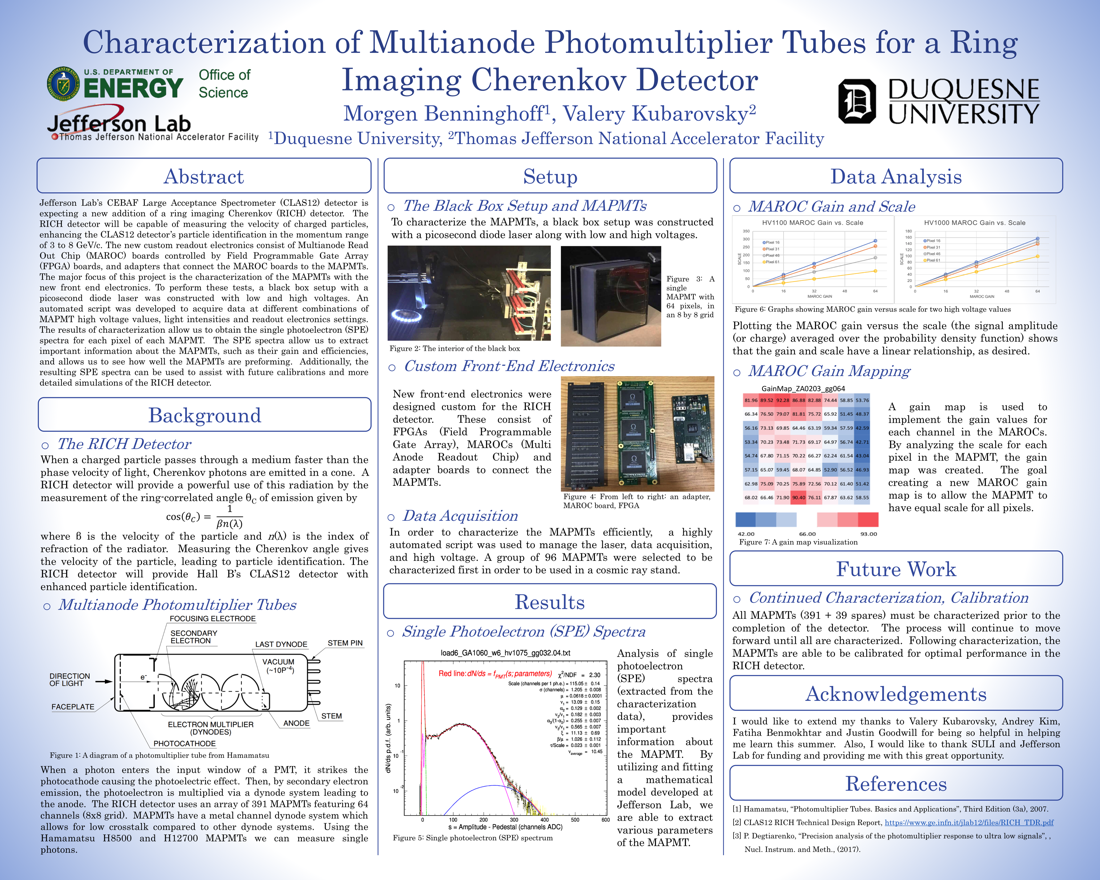Undergraduate Research at Jefferson Lab
Characterization of Multianode Photomultiplier Tubes for a Cherenkov Detector
Student: Morgen Benninghoff
School: Duquesne University
Mentored By: Valery Kubarovsky
In the Fall of 2017, Jefferson Lab's CLAS12 (CEBAF Large Acceptance Spectrometer) detector in Hall B is expecting a new addition of a RICH (ring-imaging Cherenkov) detector which will expand the CLAS12 detector's capabilities. The addition of the RICH detector will allow CLAS12 to enhance the particle identification in the momentum range between 3 and 8 GeV/c. RICH detectors are complex Cherenkov detectors that allow to measure the velocity of charged particles through detection of produced Cherenkov radiation and reconstruction of the angle of emission. The emitted Cherenkov photons are detected by a triangular-shaped grid of 391 multianode photomultiplier tubes (MAPMTs) made by Hamamatsu. The custom readout electronics, developed by INFN in Italy (National Institute of Nuclear Physics) and Jefferson Lab, consist of MAROC (multianode read out chip) boards controlled by FPGA (Field Programmable Gate Array) boards, and adapters that are used to connect the MAROC boards to the MAPMTs. The major focus of this project is the characterization of the MAPMTs with the new front end electronics. To perform these tests, a black box setup with a picosecond diode laser was constructed at Jefferson Lab as well as low and high voltage power supplies. The highly automated procedure was developed at Jefferson Lab and INFN to acquire data at different combinations of MAPMT high voltage values, light intensities and readout electronics settings. Future work involves using the collected data in the RICH detector calibration procedures and analyzing that data to resolve the best location for each MAPMT in the RICH.

Citation and linking information
For questions about this page, please contact Education Web Administrator.
